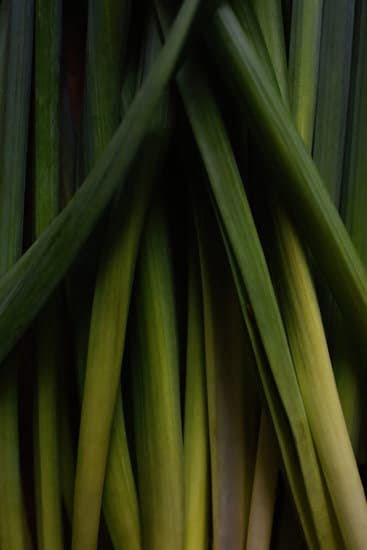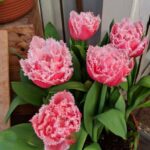Are you in need of ideas for front gardens low maintenance? Maintaining a front garden can be a time-consuming task, which is why low maintenance landscaping has become increasingly popular. In this blog post, we will discuss various ideas and tips for creating a beautiful yet easy-to-care-for front garden, including plant selection, hardscaping options, functionality design, irrigation systems, weed control, sustainability practices, and showcasing real-life examples.
With our busy schedules and limited free time, it’s important to create a front garden that requires minimal upkeep while still enhancing the curb appeal of your home. From choosing the right plants to efficient irrigation systems and sustainable practices, there are numerous ways to achieve a low maintenance front garden without sacrificing beauty.
In the following sections, we will delve into specific aspects of low maintenance landscaping and provide practical advice for designing and maintaining a front garden that is not only visually appealing but also sustainable in the long run. Whether you’re an experienced gardener or just starting out with landscaping projects, these ideas will help you create a low maintenance front garden that suits your lifestyle and enhances the overall look of your home.
Choosing the Right Plants
When it comes to creating a low maintenance front garden, choosing the right plants is crucial. By selecting plant options that require minimal care and upkeep, you can have a stunning garden without spending hours tending to it. Here are some ideas for front gardens low maintenance when it comes to choosing the right plants:
- Succulents: These water-wise plants are perfect for low maintenance gardens as they require very little water and care. Species such as agave, aeonium, and sedum come in a variety of shapes and sizes, making them versatile choices for front gardens.
- Evergreens: Opting for evergreen shrubs and trees can add year-round interest to your garden without the need for constant pruning or seasonal upkeep. Varieties like boxwood, holly, and pine provide structure and color throughout the year.
- Native Plants: Choosing native plants that are adapted to your local climate can significantly reduce the need for watering and maintenance. Look for native wildflowers, grasses, and shrubs that thrive in your area with minimal intervention.
In addition to selecting the right types of plants, it’s crucial to consider their individual care requirements. Be sure to choose plants that are well-suited to your specific growing conditions, whether it’s full sun, shade, or varying soil types. This will help ensure that your garden remains low maintenance while still thriving with healthy plant life. With these ideas in mind, you can create a beautiful front garden that requires minimal upkeep and still delivers visual impact.
Incorporating Hardscaping
When it comes to creating a low maintenance front garden, incorporating hardscaping elements can be an excellent way to reduce the need for constant upkeep while adding visual interest to your outdoor space. One of the key ideas for front gardens low maintenance is to integrate hardscaping features such as gravel, stone pathways, and mulch.
These elements not only add texture and dimension to your garden but also minimize the growth of weeds, ultimately reducing the time and effort required for maintenance.
Gravel is a versatile hardscaping material that can be used to create visually appealing pathways or define different areas within your front garden. It requires virtually no maintenance and can withstand various weather conditions. Similarly, stone pathways are another low maintenance option that adds a touch of elegance to your garden while minimizing weed growth. Additionally, using mulch around plants and in flower beds helps retain soil moisture, reduces weed growth, and contributes to the overall aesthetic of the garden.
Investing in hardscaping elements not only provides practical benefits but also contributes to the overall design of your front garden. By carefully selecting materials that require minimal upkeep, you can create a cohesive and visually stunning outdoor space without dedicating extensive time and effort to maintenance tasks.
| Hardscaping Element | Maintenance Level |
|---|---|
| Gravel Pathways | Low |
| Stone Pathways | Low |
| Mulch | Minimal |
Designing for Functionality
When planning and designing a low maintenance front garden, it’s essential to consider not only the aesthetic appeal but also the functionality of the space. Incorporating practical elements into the design can not only reduce the need for constant upkeep but also make the front garden more enjoyable and useful for homeowners. One idea for creating a functional front garden is to incorporate seating areas.
This could be in the form of a small patio, a bench nestled amongst plants, or even a cozy nook with outdoor furniture. This allows homeowners to relax and enjoy their outdoor space without adding much to their maintenance efforts.
Another important consideration when designing for functionality is storage. It’s always useful to have some form of storage in the front garden, whether it’s for gardening tools, kids’ toys, or outdoor cushions. Built-in storage benches, discreet sheds, or even decorative boxes can provide ample space for keeping the front yard tidy while minimizing the need for constant organization and clean-up.
Finally, designing a front garden with kids in mind can add both practicality and enjoyment to the space. Incorporating play areas into the landscape design allows children to have fun outdoors without damaging delicate plants or disrupting the overall look of the garden. A designated play area with soft flooring materials or durable lawn alternatives can minimize maintenance while ensuring that kids have a safe and enjoyable place to play.
| Practical Element | Ideas |
|---|---|
| Seating Areas | Patio, bench amongst plants, cozy nook with outdoor furniture |
| Storage | Built-in storage benches, discreet sheds, decorative boxes |
| Play Areas for Kids | Soft flooring materials, durable lawn alternatives |
Efficient Irrigation Systems
When it comes to low maintenance front gardens, choosing the right irrigation system is crucial. Drip irrigation systems and rain barrels are excellent options for minimizing water usage and reducing the need for constant upkeep. Drip systems deliver water directly to the plant’s root zone, maximizing efficiency and reducing water waste. Rain barrels collect and store rainwater, which can then be used to irrigate the garden during dry spells, further reducing the reliance on traditional watering methods.
In addition to selecting the right irrigation system, it’s essential to water plants efficiently. Overwatering can lead to a host of issues such as root rot and fungal diseases, while underwatering can result in stressed and unhealthy plants. By understanding the specific water needs of different plant varieties and utilizing tools like moisture meters, gardeners can ensure that their front gardens receive just the right amount of water, minimizing maintenance tasks related to plant care.
It’s also important to consider sustainable watering practices when designing low maintenance front gardens. Integrating rain gardens or swales into the landscape can help manage stormwater runoff while also providing natural irrigation for nearby plants. By implementing these eco-friendly watering solutions, homeowners can reduce their environmental impact while maintaining a beautiful and low maintenance front garden.
Weed Control and Maintenance Tips
Maintaining a low maintenance front garden doesn’t mean neglecting it completely. In fact, keeping weeds at bay and performing simple maintenance tasks can go a long way in preserving the beauty of your outdoor space. Here are some tips to help you effectively control weeds and keep your front garden looking neat with minimal effort:
- Use mulch: Mulching is a great way to suppress weed growth while also retaining moisture in the soil. Organic mulches like bark chips or compost can not only prevent weeds from sprouting but also break down over time to enrich the soil.
- Regular weeding: While low maintenance gardens are designed to minimize the need for constant weeding, it’s still important to regularly inspect your garden and remove any weeds that may have popped up. This can be easily done during leisurely strolls through your garden.
- Deadheading and pruning: Removing spent flowers (deadheading) and pruning overgrown branches not only keeps your plants looking tidy but also promotes healthy growth, reducing the need for more intensive maintenance later on.
In addition to weed control, there are various other simple maintenance tasks that can be incorporated into your routine to keep your front garden looking its best without requiring too much time and effort. These include seasonal clean-up, fertilizing when necessary, and regular inspection for pest infestations.
Remember, the goal of a low maintenance front garden is to create a beautiful outdoor space that enhances your home without becoming a burden on your time and resources. By implementing these weed control and maintenance tips, you can ensure that your front garden continues to thrive with minimal input from you.
Ultimately, designing a low maintenance front garden should not only focus on minimizing upkeep but also promoting sustainability and eco-friendliness. The next section will delve into sustainable practices that complement the low maintenance nature of your garden while benefitting the environment as well.
Sustainable and Eco-Friendly Practices
When it comes to creating a low maintenance front garden, it’s important to consider sustainable and eco-friendly practices. By incorporating these principles into your landscaping, you can not only reduce the need for constant upkeep but also minimize your environmental impact. Here are some ideas for creating a low maintenance garden that is also environmentally friendly.
Using Organic Mulch and Compost
One of the best ways to promote sustainability in your front garden is by using organic mulch and compost. Instead of relying on synthetic fertilizers and chemical-laden products, opt for natural options that nourish the soil and promote healthy plant growth.
Organic mulch helps retain moisture in the soil, reduces weed growth, and adds valuable nutrients as it decomposes. Composting kitchen scraps and yard waste not only reduces the amount of waste sent to landfills but also provides nutrient-rich fertilizer for your plants.
Natural Pest Control Methods
Instead of resorting to harsh chemical pesticides, consider using natural pest control methods in your front garden. This can include introducing beneficial insects like ladybugs or lacewings to combat garden pests, planting companion plants that deter harmful insects, or using homemade remedies such as neem oil sprays or garlic-based repellents. By choosing natural pest control methods, you can protect your plants while minimizing harm to beneficial insects and wildlife in your garden.
Water Conservation Techniques
Incorporating water conservation techniques into your front garden is another essential aspect of sustainable landscaping. Consider installing a rain barrel to collect runoff from your roof, which can then be used to water your plants during dry spells.
Additionally, choosing drought-tolerant plant species and implementing efficient irrigation systems such as drip irrigation can help minimize water usage while still keeping your garden looking lush and vibrant. By prioritizing water conservation, you can create a low maintenance front garden that is both beautiful and eco-friendly.
Showcasing Low Maintenance Front Garden Designs
In conclusion, creating a low maintenance front garden doesn’t mean sacrificing beauty or curb appeal. By choosing the right plants, incorporating hardscaping elements, designing for functionality, installing efficient irrigation systems, implementing weed control and maintenance tips, and embracing sustainable practices, homeowners can have a stunning front garden that requires minimal upkeep. The key is to carefully plan and select elements that not only look great but also serve a practical purpose.
When it comes to choosing the right plants for a low maintenance front garden, options like succulents, evergreens, and native plants are top choices. These plants not only require minimal care but also add visual interest to the landscape. Additionally, incorporating hardscaping elements such as gravel pathways and mulch can further reduce the need for constant maintenance while adding texture and depth to the garden design.
Furthermore, it’s important to consider efficient irrigation systems and environmentally friendly practices for a sustainable approach to maintaining a low maintenance front garden. Implementing strategies like drip irrigation systems and using organic mulch and compost can help minimize water consumption and promote healthy plant growth.
By showcasing inspiring examples of low maintenance front garden designs that embody these principles, homeowners can gain valuable insights and ideas for creating their own beautiful yet easy-to-care-for outdoor spaces. So whether you’re looking to revamp your current front garden or starting from scratch with a new design, these ideas for front gardens low maintenance are sure to inspire your landscaping endeavors.
Frequently Asked Questions
How Do You Landscape the Front of a House Low Maintenance?
The key to landscaping the front of a house for low maintenance is to choose plants and materials that require minimal care. This can include using native plants, installing hardscaping like gravel or stone pathways, and minimizing lawn areas.
What Is the Most Low Maintenance Garden?
The most low maintenance garden typically includes a combination of hardy, slow-growing plants such as succulents, cacti, and ornamental grasses. In addition, incorporating mulch or ground cover can help suppress weeds and minimize the need for regular maintenance.
How Do You Make a Beautiful Low Maintenance Garden?
To create a beautiful low maintenance garden, focus on selecting plants that are well-suited to the local climate and soil conditions. Using a mix of perennials, shrubs, and trees can add variety while minimizing the need for frequent replanting or pruning. Additionally, incorporating landscape fabric and mulch can help reduce weed growth and minimize the need for regular maintenance.

Welcome to my gardening blog! I am passionate about plants and enjoy sharing my knowledge and experiences with others. In this blog, I will write about everything related to gardening, from tips on how to get started to updates on my own garden projects.





